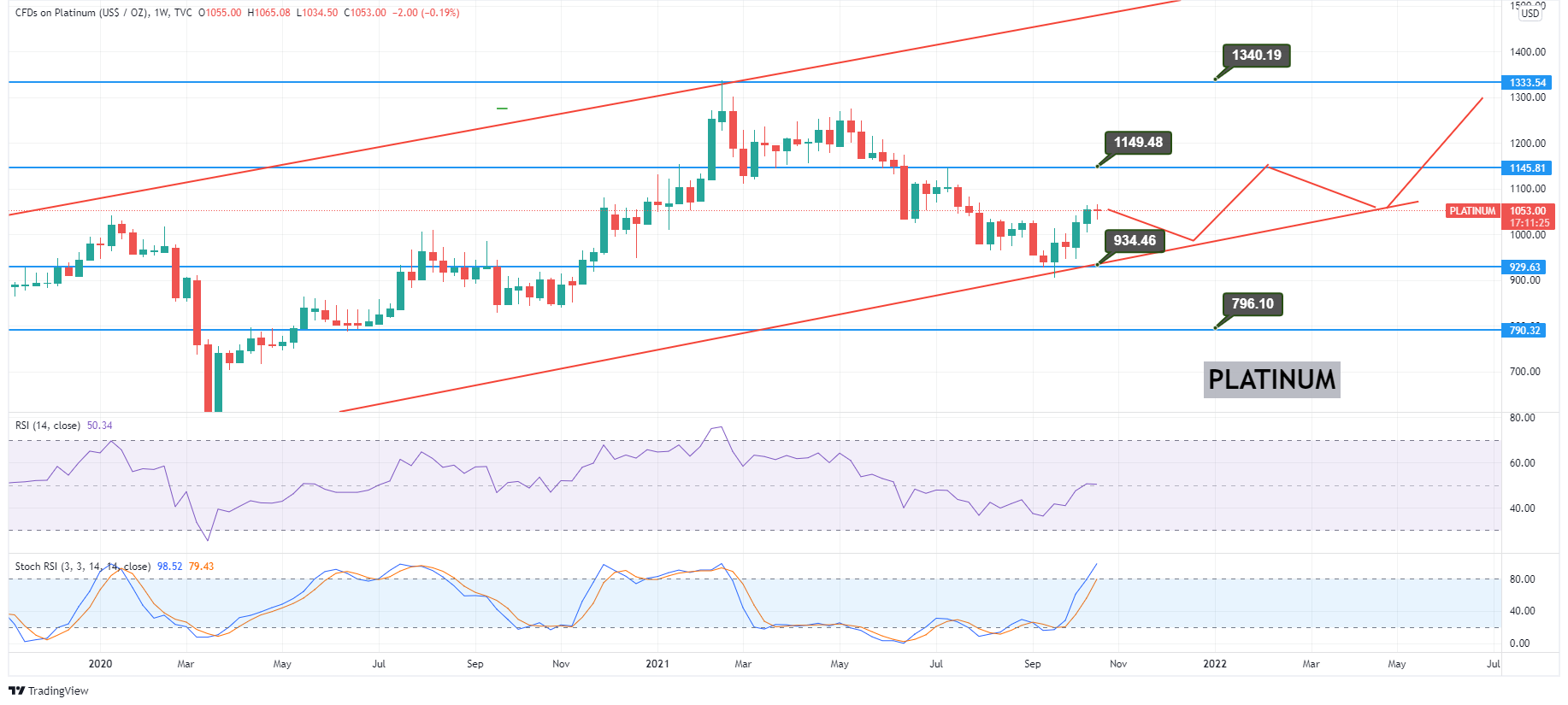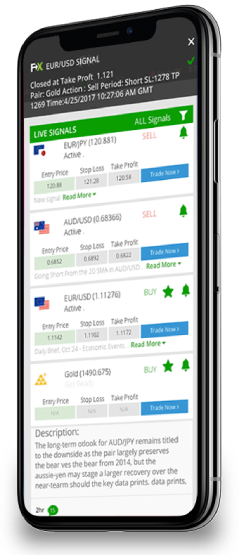Platinum Price Forecast 2023: Upward Channel to Support Platinum beyond $1000
Both platinum and silver performed much better than gold in 2020, and so far, they are keeping up this trend throughout 2022 and 2023 due to high demand. As we predicted in our September forecast, platinum reached the 100 SMA on the daily chart, after continuing its bullish momentum. In the previous decade, platinum was lagging behind other safe-haven metals, maintaining a bearish trend, although during that period, platinum was acting as a commodity more than a safe haven. The crash in platinum in 2008, during the global financial crisis, was also much larger than it was for gold and silver, with platinum losing around two-thirds of its value.
So, the picture didn’t look too bright for this precious metal, and the situation got worse when the coronavirus broke out in China and then in the rest of the world in Q1 of 2020, which sent everything crashing down. But, since then platinum has been bullish, unlike gold which has been bearish since March. The XPT/USD has kept the bullish momentum going, despite cryptocurrencies stealing the safe-haven status from precious metals. However, platinum is facing some technical obstacles just above the current price, so we will see whether buyers will be strong enough to stretch the bullish trend further up, or if platinum will join gold on its downward trip.
Recent Changes in the Platinum Price
| Period | Change ($) | Change % |
| 6 Months | +129 | +12.9% |
| 1 Year | +165 | +17.1% |
| 3 Years | +171 | +17.9% |
| 5 Years | +213 | +23.3% |
| Since 200 | +1,185 | +266% |
Platinum has been more expensive than gold at times, although the 2008 crash was detrimental for this metal. But while gold was pretty bullish during the previous decade, platinum was bearish. One of the reasons for this was the shift from platinum to palladium in the automobile industry, particularly after the Volkswagen emission scandal, where platinum had previously been used in the exhaust systems, getting fired the previous CEO Martin Winterkorn. So, as a commodity, platinum is prone to supply and demand.
However, the pickup in the demand for palladium, which is somewhat correlated to platinum, helped soften the demand for the latter, during the 2010s. But, since March 2020 platinum has enjoyed higher demand, while palladium hasn’t recuperated its losses from March yet. These two metals can act as both safe havens and commodities – in other words, risk assets – so one needs to determine which is the case in order to trade them, and right now platinum is acting as a commodity, and commodities have been surging higher lately.
Platinum – Forecast Summary
| Platinum Forecast: H2 2023 Price: $845– $1272 Price drivers: USD Correlation, Risk Sentiment, Covid-19 | Platinum Forecast: 1 Year Price: $1,350 – $1,400 Price drivers: Risk Sentiment, Technicals, USD Correlation | Platinum Forecast: 3 Years Price: $2,000 Price drivers: Decline in Demand, Long-term Technicals, Electric Cars |
Platinum Live Chart
Platinum Price Prediction for the Next 5 Years
Platinum witnessed some incredible volatilityand some major moves in 2020, due to the coronavirus and the associated lockdowns, which made major global economies contract considerably in Q2 of 2020 and again in Q4, and so far, also in Q1 of 2021, as restrictions continue. So, the volatility is expected to continue across all markets, including platinum. But due to its wide range of applications in different industries, further upside momentum is expected in platinum, as the demand for the white metal keeps increasing, following the economic recovery in China and the US.
Market Sentiment for Platinum During COVID-19
It seems like platinum and safe havens have been diverging, since gold was quite bullish during the previous decade, while platinum prices declined. The sentiment has been mostly positive for safe havenssince the end of the 2008 crisis. The global economy started to leave the 2008-09 financial crisis behind, but the following economic and political crises, which continued in the 2010s, kept safe havens in demand. However, platinum was different; it started declining in September 2011 and continued that trend until March 2020. Then the decline turned into a crash, from January until March, as the USD surged and the sentiment for commodities crashed, following the closure of China in Q1 of last year and the economic recession during that period.
But the bullish reversal since mid-March has been impressive. The precious metal has outperformed both gold and silver, as well as other markets. This appears to be a result of the improving sentiment, especially for commodities, which have been surging, as the $ 90 bullish march in crude oil since April 2020 has shown. Markets are still quite uncertain about the global economy, and how the world will be reshaped politically and economically, but they are relying on the extraordinary amount of cash that has been thrown into the markets and the economies by central banks and governments across the globe. This has been keeping the commodity and stock markets bullish. Right now we are seeing a slowdown in the global economy, as the European economy, along with certain other economies, are falling into recession again, but that hasn’t affected platinum, which made new highs in January.
Platinum Supply and Demand
Supply – The supply chain also suffered during the initial coronavirus restrictions in Q1 and Q2 of 2020, as the lockdowns affected the labor force in the mining industry. But large sections of the market, in terms of both supply and demand, returned to pre-coronavirus operational levels in Q3 of 2020. The global economic conditions improved compared to the first half of 2020, which also improved the demand, as we will see below. Platinum made a strong recovery in the second half of 2020, as the global economy rebounded, with the supply increasing by 48%, while the demand jumped by 75%.

Platinum supply is lower than demand below
As mentioned above, as a commodity, platinum is prone to the forces of supply and demand. The particular trait for platinum is that most of it is produced in South Africa, which is a large producer of many raw materials, but 75% of the global platinum production is concentrated in SA, which makes the supply side vulnerable to social, political, weather and other events that occur there. In the last few years, platinum production has suffered in South Africa, with the main problems arising from labour disputes, political instability, the instability of the South African Rand etc. These events have led to disruptions in production during the last 2 to 3 years. In addition to the worsening risk sentiment, this has been another reason for the increase in platinum prices since 2018. Now, the outbreak of the coronavirus has forced big producers, such as Impala Platinum and Anglo American Platinum, to stay closed, due to lockdown measures. I don’t know how social distancing works in mining, above or below ground, but if that is an issue too, it will be another problem from the supply side. That could be another reason for the increase in the platinum prices since the middle of March last year.
Demand – The platinum demand took a hit in the last decade, especially due to the issues with Volkswagen in 2015, which as we know, rigged carbon emission data, lowering the read-outs for diesel cars which used platinum in the exhaust systems. After all the emissions drama, the automobile industry started shifting the demand from platinum to palladium, and to some extent rhodium. As we know, the price of palladium has been surging since 2016, from around $ 400 to just below $ 3,000 by February 2020, and the shift from platinum to palladium in the auto industry has been one of the main reasons for this increase, since it is a long-term factor. Of course, this is negative for platinum, hence the decade-long decline.
But there have been some positive developments regarding the demand for platinum since the mid-2020s. The global platinum group metals (PGM) supply, which includes platinum, palladium and rhodium, is expected to reach 22.44 million ounces in 2024, at a growth rate of 6.8%, while the demand is expected to exceed the supply again in 2021.

Demand in the previous 5 quarters according to the industry
There are several reasons for this, ranging from the accelerated global urbanization, rapid industrialization, high adoption of platinum-based pharmaceuticals and increasing fuel cell demand, all of which are expected to drive the market. In H1 of 2020, the outbreak of the coronavirus pandemic had a negative impact on the automobile market, as the first lockdowns crushed the global economy, and with it the manufacturing sector. But the second wave of restrictions is not having any impact on this sector. Instead, manufacturing and industrial production has been surging higher in the last few months, to some of the best levels on record, which is keeping production up. China is back, and running on all cylinders, which means that the Chinese demand for platinum in both the automobile and jewelry industries, will keep increasing. In 2021 expectations are for a 24% year-on-year jump in the global demand for automotive platinum, with light-duty auto production anticipated to increase by 15% and heavy-duty vehicle production by 5%. The strategist for UBS Global Wealth Management is of the opinion that silver and platinum will outperform gold in 2021, as the world economy recovers and industrial demand picks up. According to WPIC, the 2021 platinum forecast indicates that the supply will increase by 17%, and the demand by 2%. This means the third annual deficit, which is expected at -224 koz. The Chinese jewelry demand is expected to increase for the first time in seven years.
Technical Analysis – Upward Channel to Support Platinum at $935
Platinum has made three big reversals in the last two decades and another big reversal might be underway now, which would be bullish if it works out. On the monthly chart below, we see that the XPT/USD was on a steady uptrend from back in the 1990s. The pace of the trend picked up considerably during 2006-07, while in Q1 of 2008, platinum prices surged higher, reaching a record of $ 2,302 in March that year. Then came the 2008 financial crisis, which sent the XPT/USD diving lower, to around $ 750. But platinum recovered well in the following years, climbing to $ 1,920 by August 2011. That’s when the downtrend started, and platinum went into a bearish trend from then, although the situation might have changed since March last year, especially if the 100 SMA breaks. During the uptrend, which lasted until 2008, the 20 SMA (gray) provided support for the XPT/USD on the monthly time frame.

On the weekly timeframe, the Platinum has crossed below the 50-period exponential moving average (EMA). That’s providing resistance at the $1072 level. Recently, the metal has already violated the major support level of 1,141 and the closing of a candle below this level supports the chances of a bearish trend continuation.
As we can see on the weekly chart, platinum is closing with a series of candles such as bullish engulfing and doji above the 1,041 support level. This has a strong chance of triggering a bullish trend until the next resistance area of the 1,349 level. On the way to the 1,350 level, Platinum can gain minor resistance around 1,149.
Speaking of the RSI and MACD, both are supporting a bullish trend in platinum. Therefore, the idea is to stay bullish above the 934 level. On the other hand, a bearish crossover at the 934 level could trigger a selling trend until the 796 level. Consider remaining bullish above 935 in order to reach 1149 and 1340 levels.Good luck!









